Marigo Audio Lab L3 Isolation Platform and Composite Base by Miike Girardi
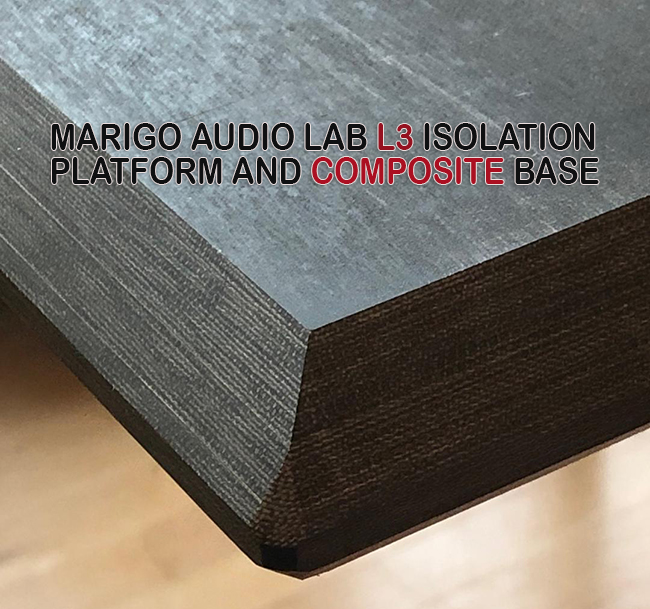
 This review is the first on Marigo Audio Lab products that will also include the E3 Mystery Feet and ZSD-31/ZSD-41 SuperDots shortly. The background as to why I have chosen to embark on this quest to evaluate and own select reference component isolation and resonance control products is also covered in that review. Reviewing the Marigo Audio L3 Isolation Platform and Large Composite Base(s) is simply the natural progression in this upgrade path.
This review is the first on Marigo Audio Lab products that will also include the E3 Mystery Feet and ZSD-31/ZSD-41 SuperDots shortly. The background as to why I have chosen to embark on this quest to evaluate and own select reference component isolation and resonance control products is also covered in that review. Reviewing the Marigo Audio L3 Isolation Platform and Large Composite Base(s) is simply the natural progression in this upgrade path.
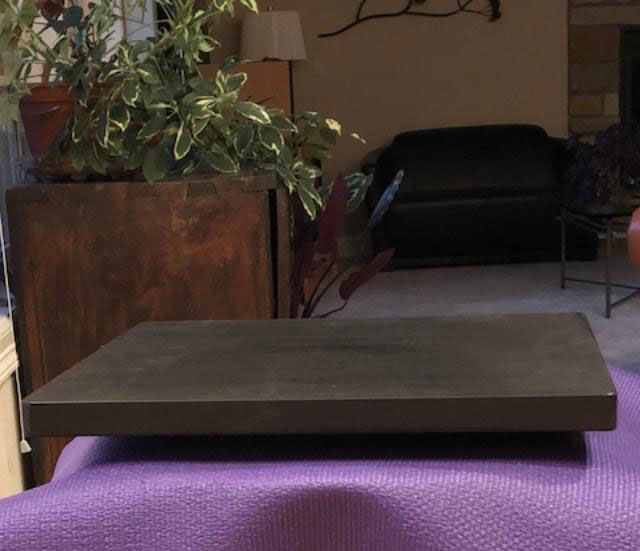
 Marigo Audio Lab offers three performance levels of isolation platforms known as the L1, L2, and L3, increasing layer count and resulting overall thickness as you move up the line. The L3 is the top-performing platform with 40 alternating thin layers of an extremely stiff proprietary custom high-tech composite. The layers are shaped into a microscopic wave pattern, combined with a unique heat-cured resonance damping material. Each L3 platform is machined to a final thickness of approximately 1.5 inches and has a large chamfer machined on the top and bottom perimeter. The chamfers are said to disperse remaining low-level vibrations that can propagate longitudinally within the L3 platform to be dissipated completely. Each L3 platform is finished with a proprietary formulated organic lacquer which requires several days for each coat to dry. According to Ron Hedrich of Marigo Audio Lab, it took ten years of R&D to complete the development of the L3 Isolation Platform. The L3, with its unique cross-sectional shape, was designed to be used with any component isolation footer system and will provide the optimum foundation to get the best performance from the E3 Mystery Feet. I would describe the L3s as very heavy for their size and are beautiful in appearance.
Marigo Audio Lab offers three performance levels of isolation platforms known as the L1, L2, and L3, increasing layer count and resulting overall thickness as you move up the line. The L3 is the top-performing platform with 40 alternating thin layers of an extremely stiff proprietary custom high-tech composite. The layers are shaped into a microscopic wave pattern, combined with a unique heat-cured resonance damping material. Each L3 platform is machined to a final thickness of approximately 1.5 inches and has a large chamfer machined on the top and bottom perimeter. The chamfers are said to disperse remaining low-level vibrations that can propagate longitudinally within the L3 platform to be dissipated completely. Each L3 platform is finished with a proprietary formulated organic lacquer which requires several days for each coat to dry. According to Ron Hedrich of Marigo Audio Lab, it took ten years of R&D to complete the development of the L3 Isolation Platform. The L3, with its unique cross-sectional shape, was designed to be used with any component isolation footer system and will provide the optimum foundation to get the best performance from the E3 Mystery Feet. I would describe the L3s as very heavy for their size and are beautiful in appearance.
Enhanced performance of the Marigo Audio Lab E3 Mystery Feet can be achieved by adding one Marigo Audio Lab ZSD-41 SuperDot or composite bases (LRCB) under each E3, with the LRCB being the higher echelon component. A set of three or four round-shaped LRCB positioned under a component with a corresponding Marigo Audio Lab ZSD-31 SuperDot is cost-effective to E3 Mystery Feet. They are best suited for small component footprint applications such as Internet routers, Grounding Boxes, NAS drives, and linear power supplies but can be effective on larger components. Like the Marigo Audio Lab SuperDots, the LRCBs comprise custom-produced composite materials stacked in a proprietary layer stack and result from refinement based on numerous iterations and dedicated listening tests. Optimization of the rectangular-shaped (2.75″ x 4.25″) LRCBs is achieved by individually rotating their position or angle relative to the component central axis.
This review will evaluate the Marigo Audio Lab L3 Isolation Platforms against butcher block maple amplifier stands, including installation in an existing butcher block maple rack. Later I will build upon the review with the incorporation of LRCBs stacked under Marigo Audio Lab E3 Mystery Feet as previously installed in my system.
Component Isolation/Resonance Control Translates to Musical Involvement Part 2
My reviewing system includes; the AfterDark Project ClayX Roon KARMANN Music Server, AfterDark Project ClayX Giesemann Rosanna Network Bridge, AfterDark Double Emperor Crown Master Clock for the EtherRegen, Ayon Audio S-5 Network Player/Preamplifier/DAC, Uptone JS-2 Linear Power Supply for Google Fiber Router and EtherRegen, Ayon Audio Odin Ill Build four amplifier fitted Siemens signal tubes, First Watt SIT-1 monoblocks, Cube Audio Nenuphar loudspeakers, Wireworld Platinum Starlight 8 Twinax Ethernet cables, Synergistic Research Galileo UEF speaker cables, Galileo SX interconnects, and Galileo SX AC power cables, Revelation Audio Labs Precept II A/C Mains, SR PowerCell SX, SR UEF Black outlets, SR Wide Angle HFTs, SR Active Grounding Block SE and UDG cables, SR Black Box, Marigo Audio Lab E3 Mystery Feet under all main components, Marigo Audio Labs ZSD-31/ZSD-41 SuperDots under all supporting components, Stillpoints Apertures, and PerfectPath Technologies Eden Gates. My listening area is 14ft and 10″ wide with a 9′ ceiling and has a nearly open back wall to1500 sq ft of first-floor living area.
I started by installing the Marigo Audio Lab L3 Isolation Platforms under my First Watt SIT-1 monoblocks that were originally isolated with spiked butcher block platforms. Once installed, now in combination with the Marigo Audio Lab E3 Mystery Feet, I heard for the first time an additive synergy of both components in their effect on reducing the noise floor and accurately portraying the previously compressed dynamics. With additional L3s implemented under both chassis of the Ayon Audio S-5 Network Player, there was a newfound coherency in frequency response timing not previously attained in my system. Sans the L3 Isolation Platforms, I now realized how much butcher block maple rings and ultimately colors and compresses the audio signal as a platform material. Adding the Marigo Audio Lab rectangular-shaped LRCBs under each E3 Mystery Feet (5 sets of 3) amplified the effect on my system of accurately portraying the interrelationship of space between instruments and the image depth of each instrument. If the Marigo Audio Labs had a sonic signature, it was the evenness of the frequency response of each instrument and vocal, the naturalness of dynamics, the resolution of microdynamic details, and the natural expression of the soundstage color palette. Replacing the existing brass cone footers and coupling disks with the stacked arrangement of ZSD-41 and ZSD-31 SuperDots (sets of three) under each L3 Isolation Platform was the icing on the cake; a complete transformation in musicality. Given these results and those presented in my review of the E3 Mystery Feet and ZSD-41/ZSD-31 SuperDots, I evaluated all Marigo Audio Lab products discussed for the remainder of the review above as mechanical isolation and component resonance control system.
Blue Maqams (ECM), a 24bit/192K digital download composed by the Tunisian oudist, Anouar Brahem, was first chosen to evaluate the effectiveness of the Marigo Audio Lab product assortment. Blue Maqams represents Brahem’s tenth outing for ECM, and it’s an album that is likely to be of particular interest to British jazz listeners. The quartet line-up features British-born, US-based bassist Dave Holland, who appeared alongside Surman on Brahem’s 1998 trio album “Thimar.” The group also includes the British pianist Django Bates and another first-time Brahem collaborator, the esteemed American drummer Jack DeJohnette.
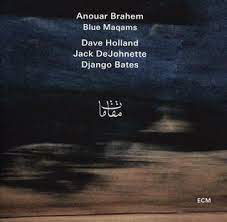 Blue Maqams has received worldwide acclaim. In DownBeat magazine, Bobby Reed wrote: “The result is a program that features traditional music from Arab culture as well as more modern jazz elements. The word ‘maqam’ refers here to Arabic melodic art, but also to Iraqi maqam, as practiced by master oud player Munir Bashir. Each musician shines here.” On Allmusic, Thom Jurek observed, “Blue Maqams is lovely. It’s a nearly perfect illustration of balance between cultural and musical inquiry, underscored by this gifted ensemble’s confidence and near symbiotic communication. This is an exceptional outing, even for an artist as accomplished and creative as Brahem.” And writing for The Guardian, reviewer John Fordham stated: “Brahem’s oud often sketches in the themes, sometimes shadowed by the others in dreamy twilight reflections, more often accelerating into languidly swaying night walks such as the title track. Spanish-tinged guitar-like jams end in drum flurries while thumping Holland bass vamps release scintillating jazz breakouts … It’s a real meeting of hearts and minds.”
Blue Maqams has received worldwide acclaim. In DownBeat magazine, Bobby Reed wrote: “The result is a program that features traditional music from Arab culture as well as more modern jazz elements. The word ‘maqam’ refers here to Arabic melodic art, but also to Iraqi maqam, as practiced by master oud player Munir Bashir. Each musician shines here.” On Allmusic, Thom Jurek observed, “Blue Maqams is lovely. It’s a nearly perfect illustration of balance between cultural and musical inquiry, underscored by this gifted ensemble’s confidence and near symbiotic communication. This is an exceptional outing, even for an artist as accomplished and creative as Brahem.” And writing for The Guardian, reviewer John Fordham stated: “Brahem’s oud often sketches in the themes, sometimes shadowed by the others in dreamy twilight reflections, more often accelerating into languidly swaying night walks such as the title track. Spanish-tinged guitar-like jams end in drum flurries while thumping Holland bass vamps release scintillating jazz breakouts … It’s a real meeting of hearts and minds.”
Once again, a significant shift toward truthful timbre had taken place on this recording with the full complement of Marigo Audio Lab isolation products. I heard this timbrel truthfulness in the overall tonality ranging from the pitch definition in the lowest octaves to greater clarity in the uppermost frequencies. On the first cut, “Opening Day,” the oud played by Brahem sounded so lifelike and natural, and there was a new sweetness and weight to the piano notes played by Couturier that I had not previously heard. Every instrument sounded more organic to my ears than my previous reference footers and platforms. For the first time, there was a complete lack of smear in the sound of the cymbals. The ringing and slurring of the music that was present before were removed entirely, resulting in coherency in frequency response timing. My listening sessions extended much longer due to the lack of ear fatigue I was not experiencing with Ron’s new products. In terms of audio component upgrades, this exceeded the main component upgrade.

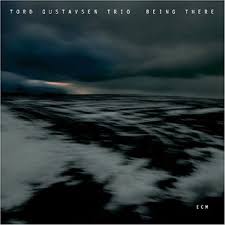 I recently discovered, Being There by pianist/composer Tord Gustavsen. On this third outing for ECM, pianist/composer Tord Gustavsen comes full circle on Being There. When he signed to the label in 2003, issuing his debut, Changing Places, he and his collaborators – bassist Harald Johnsen and drummer Jarle Vespestad — dug deeply into close-knit quarters, creating a detailed yet expressionistic examination of the more melancholy human emotions. Being There completes a trilogy of elegantly layered, spacious jazz from the most introspective elements. As a pianist and composer, Gustavsen employs only the barest essentials. There is no fiery technique, no gimmickry that will heighten or dampen the mood, no harmonic drift. This music flows from a source, albeit quietly and enigmatically, looking into territory explored on this side of the Atlantic on earlier albums by Brad Mehldau, albeit with a distinctly Northern European voice. Perfect for ECM, the music is cool, almost uncomfortably so, such that when its lyricism is fully given a voice, it often takes the listener by surprise, instilling a kind of silence that breeds wonder rather than detachment. Manfred Eicher’s signature production allows Gustavsen’s piano the sheer deliberation and consideration he requires to put his gorgeous melodies into the air. This rhythm section doesn’t follow his lead so much as flow into it, playing as a single voice, allowing these songs form and function. Gustavsen’s imagery is skeletal, yet he shines light into the darkened corners of those less than celebratory moodscapes, bringing an intricate balance to both lyric and emotion.
I recently discovered, Being There by pianist/composer Tord Gustavsen. On this third outing for ECM, pianist/composer Tord Gustavsen comes full circle on Being There. When he signed to the label in 2003, issuing his debut, Changing Places, he and his collaborators – bassist Harald Johnsen and drummer Jarle Vespestad — dug deeply into close-knit quarters, creating a detailed yet expressionistic examination of the more melancholy human emotions. Being There completes a trilogy of elegantly layered, spacious jazz from the most introspective elements. As a pianist and composer, Gustavsen employs only the barest essentials. There is no fiery technique, no gimmickry that will heighten or dampen the mood, no harmonic drift. This music flows from a source, albeit quietly and enigmatically, looking into territory explored on this side of the Atlantic on earlier albums by Brad Mehldau, albeit with a distinctly Northern European voice. Perfect for ECM, the music is cool, almost uncomfortably so, such that when its lyricism is fully given a voice, it often takes the listener by surprise, instilling a kind of silence that breeds wonder rather than detachment. Manfred Eicher’s signature production allows Gustavsen’s piano the sheer deliberation and consideration he requires to put his gorgeous melodies into the air. This rhythm section doesn’t follow his lead so much as flow into it, playing as a single voice, allowing these songs form and function. Gustavsen’s imagery is skeletal, yet he shines light into the darkened corners of those less than celebratory moodscapes, bringing an intricate balance to both lyric and emotion.
Before implementing Ron’s buffet of component isolation and resonance control products, I never connected emotionally to the various cuts on Being There. The First Watt SIT-1 amplifiers are ruthlessly revealing given their design and implementation of the single output device static transistor. Adding in the crossover-less Cube Audio Nenuphars, and you have a recipe for either a lunar eclipse or a cloudy washout day. Ron’s products allowed me to fully relax while becoming one with the mood of the music. They provided the gateway to experience the true intent of each artist and the composer as presented in the recording. I have never listened to my system as much as I have as of late since the adoption of Ron’s excellent products.
Conclusion
“Everything matters,” as the saying goes, and like almost everything else in life today, somebody is always looking to stretch the envelope of what’s possible. With his state-of-the-art component isolation and resonance control products, Ron Hedrich of Marigo Audio Lab has achieved this. A new standard has been set for component isolation and resonance control—my new reference.


Mike G
Specifications:L3 Isolation Platform, $1,949.00 (19” x 18”)
Large Component Base (LRCB), $199.00 (set of 2)
Address:
Marigo Audio Lab
32711 SE 16th St.,
Washougal, WA 98671
USA
Tel: (360) 835 – 9239
Fax: (360) 835 – 9249
Email: marigoaudio@frontier.com
Website: www.MarigoAudio.com
Associated Equipment
Digital Front End
Ayon Audio S-5 Network Player/Preamplifier
Qnap TS-251+8GB NAS drive
Uptone Audio JS-2 Power Supply
Uptone Audio EtherRegen
Amplification
Ayon Audio Odin SET stereo amplifier III Build 4
First Watt SIT-1 monoblock amplifiers
Loudspeakers
Cube Audio Nenuphar loudspeakers
Cabling
Revelation Audio Labs Precept II CryoSilver Reference A/C Mains x 3
Synergistic Research Galileo UEF speaker cables with Blue Fuse treatment
Synergistic Research Galileo SX interconnect
Synergistic Research Galileo SX ac power cords, digital and analog
Synergistic Research Atmosphere High Definition Grounding cables x 14
Wireworld Platinum Starlight 8 Twinax Ethernet x 3
Accessories
Synergistic Research PowerCell SX
Synergistic Research HFTs on loudspeakers, Wide Angle HFTs on wall
Synergistic Research Active Grounding Block SE
Synergistic Research Black Box
Perfect Path Technologies Eden Gates
LessLoss Blackbody ambient field conditioner x 2
Marigo Audio Lab E3 Mystery Feet x 5 sets of 3
Marigo Audio Lab ZSD-31 and ZSD-41 SuperDots x 6 sets of 3
Custom-built maple wood rack with stainless steel support rod, sleeves, and cones
Marigo Audio Lab Window Tuning Dots
Herbie’s Audio Lab Preamp Ultrasonic tube dampers
Synergistic Research UEF Black duplexes
Synergistic Research Blue fuses
Still points Apertures x 6
Townshend Audio Seismic Podiums x 2 on Nenuphars
Furutech NCF Booster x 4
Furutech NCF Booster-Signal x 10
Oyaide WPC-Z aluminum mounting frame and carbon fiber faceplates
Two dedicated 20 amp AC lines using cryo treated Romex
Stereo Times Masthead
Publisher/Founder
Clement Perry
Editor
Dave Thomas
Senior Editors
Frank Alles, Mike Girardi, Russell Lichter, Terry London, Moreno Mitchell, Paul Szabady, Bill Wells, Mike Wright, and Stephen Yan,
Current Contributors
David Abramson, Tim Barrall, Dave Allison, Ron Cook, Lewis Dardick, John Hoffman, Dan Secula, Don Shaulis, Greg Simmons, Eric Teh, Greg Voth, Richard Willie, Ed Van Winkle, Rob Dockery, Richard Doran, and Daveed Turek
Site Management Clement Perry
Ad Designer: Martin Perry



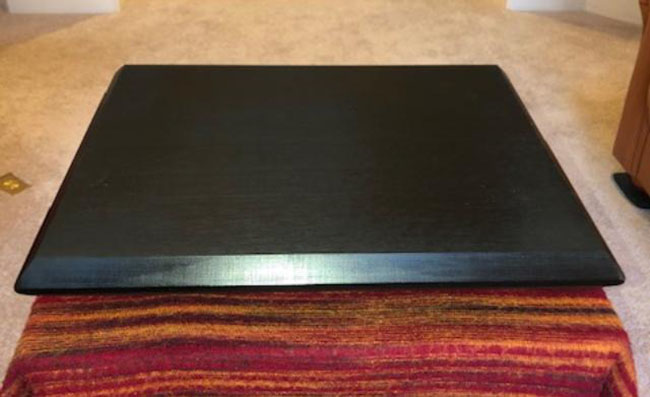




Be the first to comment on: Marigo Audio Lab L3 Isolation Platform and Composite Base by Miike Girardi